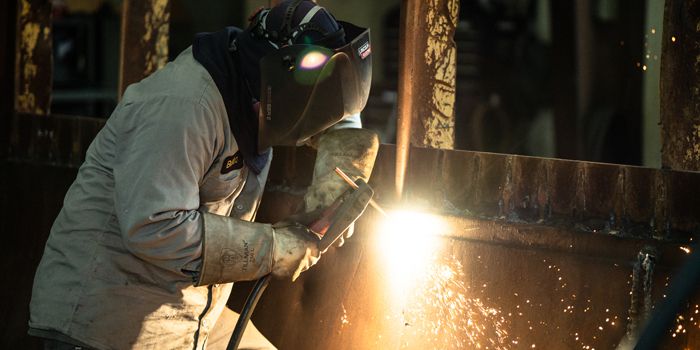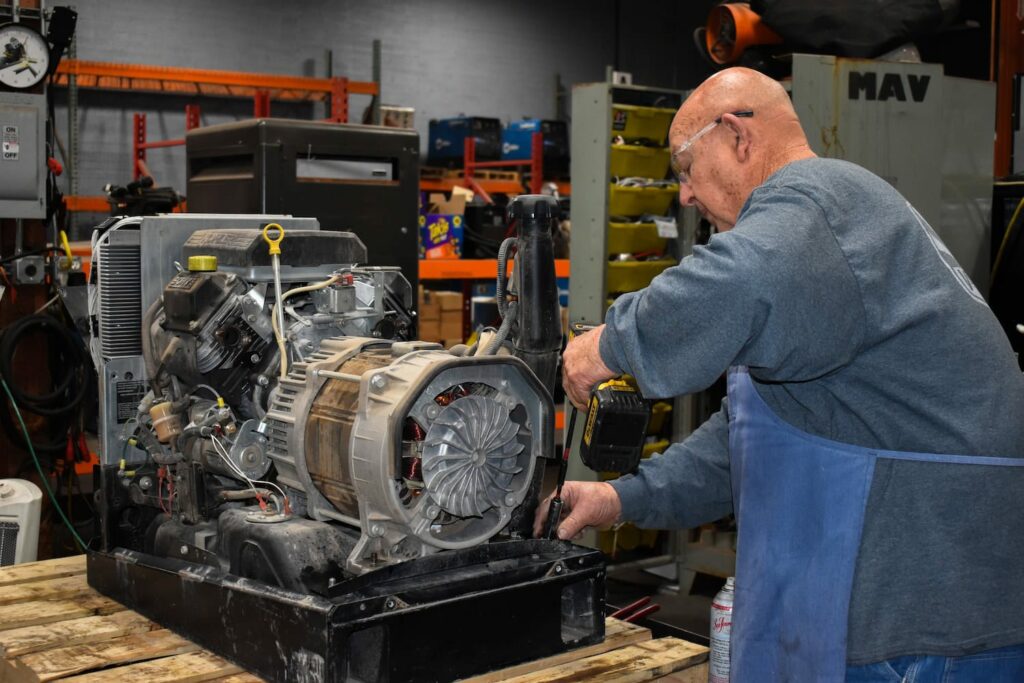Everything about Welding: Key Insights Into Techniques and Finest Practices for Success
Welding includes a range of strategies, each suited for specific products and applications. Understanding these methods, such as GMAW, SMAW, and TIG, is vital for accomplishing suitable results. The right equipment and safety and security practices can not be overlooked. As prep work and repairing play important functions in the welding process, understanding these aspects can significantly boost the high quality of the last item. What are the essential variables that ensure an effective weld?
Comprehending Different Welding Techniques
Welding techniques encompass a selection of approaches, each fit to specific applications and products. Amongst one of the most common techniques are Gas Metal Arc Welding (GMAW), Protected Metal Arc Welding (SMAW), and Tungsten Inert Gas Welding (TIG) GMAW, also understood as MIG welding, is prominent for its rate and versatility, making it perfect for thin products. SMAW, or stick welding, is favored for its simplicity and performance in exterior atmospheres, especially with thicker metals. TIG welding offers accuracy and control, making it suitable for complex job and non-ferrous steels (Montana Mobile Welding and Repair Welding). Each method has its distinct advantages and considerations, allowing welders to choose the very best technique based upon the project's needs, product type, and desired end results. Comprehending these techniques is essential for effective welding
Essential Welding Devices and Devices
While different welding techniques need specific skills, the best tools and devices are equally important for attaining quality results. Vital welding tools consists of welding machines, which vary depending upon the method-- such as MIG, TIG, or stick welding. Safety equipment, including aprons, handwear covers, and helmets, guarantees security and comfort during the procedure. Additionally, components and clamps help secure products in place, guaranteeing precision in welds. Consumables like welding rods, cable, and protecting gas are likewise essential parts that affect the top quality of the weld. In addition, devices such as cutters and grinders help with surface prep work and post-weld completing, adding to a specialist result. Buying high-grade devices eventually improves the performance and effectiveness of welding jobs.
Safety And Security Practices in Welding
Correct safety methods are necessary in the welding industry to shield workers from prospective risks. Welders must wear suitable personal protective devices (PPE), including safety helmets with appropriate shading, handwear covers, and flame-resistant apparel. Sufficient air flow is crucial to decrease direct exposure to dangerous fumes and gases produced throughout the welding process. In addition, workers must be learnt the proper handling of welding tools to stop accidents. Fire security measures, such as maintaining flammable products far from the welding area and having fire extinguishers easily offered, are required. Routine inspections of tools and work spaces can assist recognize prospective dangers before they bring about crashes. By sticking to these safety methods, welders can produce a much safer working setting and lessen threats related to their trade.
Preparing Materials for Welding
Preparing products for welding is an important step that substantially affects the top quality and honesty of the end product (Montana Mobile Welding and Repair Belgrade Fabrication). Proper preparation entails cleaning the surfaces to get rid of contaminants such as dust, corrosion, and oil, which can jeopardize the weld. Methods such as grinding, fining sand, or utilizing solvents are frequently utilized to achieve a clean surface. Furthermore, making sure that the materials fit together snugly is crucial; gaps can cause weak welds. It's also vital to consider the positioning and positioning of the components, as this will influence the convenience of welding and the last end result. Finally, selecting the proper filler material and ensuring compatibility with the base metals is necessary for achieving solid, long lasting welds
Tips for Getting High-Quality Welds
Achieving top quality welds calls for attention to information and adherence to ideal practices throughout the welding process. Correct joint preparation is important, guaranteeing surfaces are clean and totally free from contaminants. Choosing the suitable filler product and welding strategy based on the base steels is essential for suitable bonding. Maintaining consistent travel rate and angle while welding can prevent defects and promote uniformity. In addition, controlling warmth input is crucial; extreme heat can cause bending and deteriorated joints. Frequently examining the welds during her explanation the procedure permits instant adjustments if essential. Finally, utilizing appropriate post-weld treatments, such as cleaning and stress and anxiety alleviation, can boost the durability and stability of the weld, eventually making certain a successful end result.
Fixing Typical Welding Issues
Welding typically offers challenges that can impact the quality and stability of the final item. Common issues such as porosity, inconsistent weld grains, and overheating can develop, each calling for certain troubleshooting strategies. Comprehending these issues is essential for welders to enhance their abilities and accomplish suitable outcomes.
Porosity Troubles Described
Porosity can frequently be forgotten, it stays an important concern in welding that can endanger the integrity of an ended up item. Porosity refers to the presence of tiny gas pockets within the weld grain, which can lead and compromise the joint to premature failure. This problem normally develops from impurities, moisture, or inappropriate securing gas insurance coverage during the welding procedure. To reduce porosity, welders must verify that the base products are dry and clean, make use of proper protecting gases, and maintain regular welding criteria. On a regular basis inspecting the equipment and setting can likewise help identify potential problems prior to they show up in the weld. Dealing with porosity effectively is essential for accomplishing solid, resilient welds that fulfill quality criteria.

Inconsistent Weld Beads
Irregular weld beads can considerably impact the quality and stamina of an ended up item. Different elements add to this concern, including incorrect traveling speed, incorrect amperage setups, and inconsistent electrode angles. When the welder moves as well swiftly, a bead might show up slim and lack penetration, while relocating too slowly can trigger excessive build-up. Additionally, making use of the wrong amperage can result in either undercutting or extreme spatter, both of which compromise weld honesty. The welder's method, such as irregular torch movement, can likewise result in irregular bead look. To reduce these troubles, welders ought to concentrate on keeping constant, controlled activities and making sure proper devices settings to accomplish harmony in their welds. Consistency is vital to accomplishing strong and reliable welds.
Overheating and Warping Issues
Too much warmth throughout This Site the welding process can lead to substantial overheating and deforming concerns, influencing the structural stability of the workpiece. These troubles usually manifest as distortion, which can endanger alignment and fit-up, making additional assembly testing. Elements contributing to overheating consist of the choice of welding specifications, such as voltage and travel speed, in addition to the sort of product being welded. To alleviate these concerns, welders ought to keep consistent travel speed and proper heat input while monitoring the workpiece temperature level. In addition, preheating or post-weld warm therapy can assist ease stresses triggered by rapid cooling - Montana Mobile Welding and Repair Fabrication. Routine assessment and adherence to finest methods are necessary in stopping overheating and guaranteeing the longevity and reliability of bonded frameworks
Often Asked Concerns
What Are the Profession Opportunities in the Welding Industry?
The welding industry supplies varied occupation chances, including positions as welders, teachers, designers, and examiners. read Professionals can operate in manufacturing, construction, aerospace, and automotive sectors, profiting from solid demand and competitive salaries in various roles.
Just How Can I Boost My Welding Speed Without Giving Up High Quality?
To improve welding rate without sacrificing high quality, one should exercise efficient methods, maintain devices, optimize setups, and boost hand-eye sychronisation. Regular training and seeking feedback can likewise significantly add to accomplishing much faster, high-grade welds.
What Qualifications Are Available for Welders?
Countless accreditations exist for welders, including those from the American Welding Society (AWS), the National Facility for Building Education And Learning and Study (NCCER), and different industry-specific companies. These qualifications enhance employability and demonstrate ability proficiency.
Just How Does Welding Affect the Features of Metals?
Welding influences the homes of steels by modifying their microstructure, which can result in modifications in toughness, hardness, and ductility. Warm input and air conditioning rates during the procedure considerably influence these material attributes.
Can I Bonded Dissimilar Metals With Each Other?

Comments on “How to respond when encountering porosity in Montana Mobile Welding and Repair Welding”